Skateboard Deck Buying Guide — Our Pro Tips
Skateboard Deck Buying Guide — Our Pro Tips
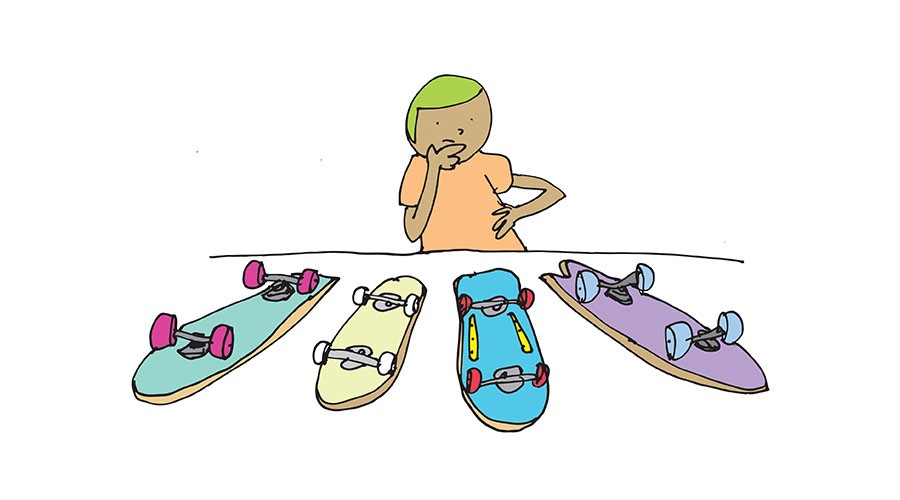
Your skateboard deck is one of the most important factors to consider when buying a skateboard. Your size, the terrain you're going to be skateboarding – skate parks, streets or ramps and bowls – and whether you're a beginner or advanced skater all make a difference. Our tips below will help you pick the best board for your needs.
What is a Skateboard Deck?
A skateboard deck is the board a skater stands on. It's comprised of three parts:
- Nose (front)
- Wheelbase (between trucks)
- Tail (rear)
To find out which is which, take a closer look at your board: the nose is usually slightly longer than the tail. The wheelbase is the distance between the mounting holes on the board, i.e., the distance between two trucks.
When choosing the right skateboard deck, there are two main types to consider:
- Classic skateboard: the go-to choice for street, transition and tricks
- Longboard and cruiser: typically used for downhill racing or cruising
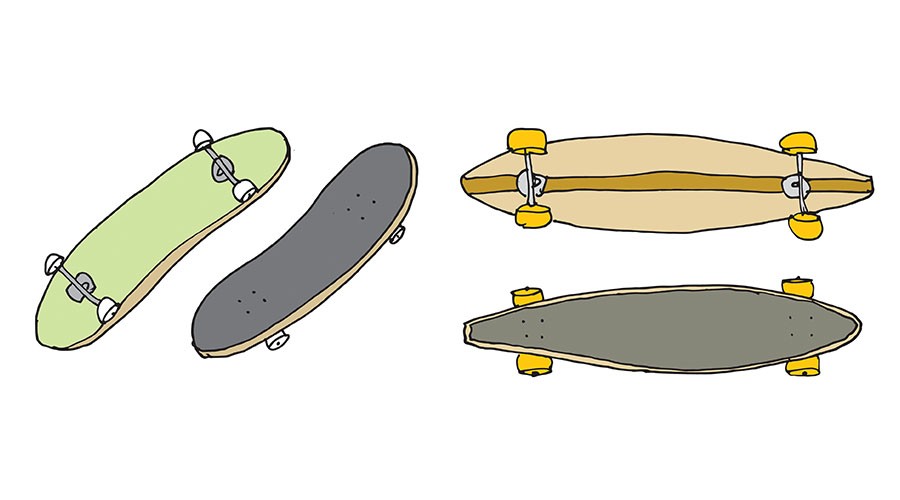
The right skateboard type will depend on your riding style. If you're new to skateboarding, a complete skateboard with the trucks and wheels pre-mounted is a good option. We cover more about the variations in our article "Types of Skateboards".
Skateboard Deck Constructions
What are Skateboards Made Of?
Skateboards are usually made of maple wood from North America.
Deck Technology
Most decks feature the classic 7-ply construction, meaning there are seven veneers of maple in the board. The veneers are pressed together with either glue or epoxy resin and then moulded to give the skateboard its shape.
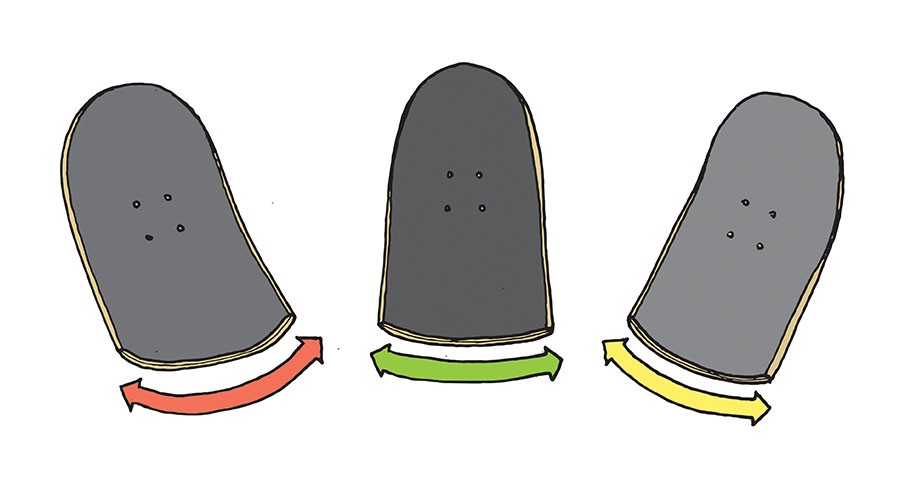
Skateboard Concaves
The concave is the curvature across the surface of the deck, between the nose and tail. There are three types available:
- Steep concave: The curvature is very pronounced, making the board more agile and easy to flip. Suitable for all levels.
- Mellow concave: Only a slight, less pronounced curvature – this ensures a more stable ride but makes flipping harder. Suitable for all levels, including beginners.
- Standard concave: The most common and a good middle ground if you're in doubt over which deck concave to choose for. Suitable for all levels, including beginners.
Nose and Tail
What was traditionally known as "kick" or "kicktail" in skate's early days – now outdated – is what skaters call "nose and tail", or the upwards bend of the nose and tail on a skateboard. A double tail is a skateboard with two upturned tails at either end.
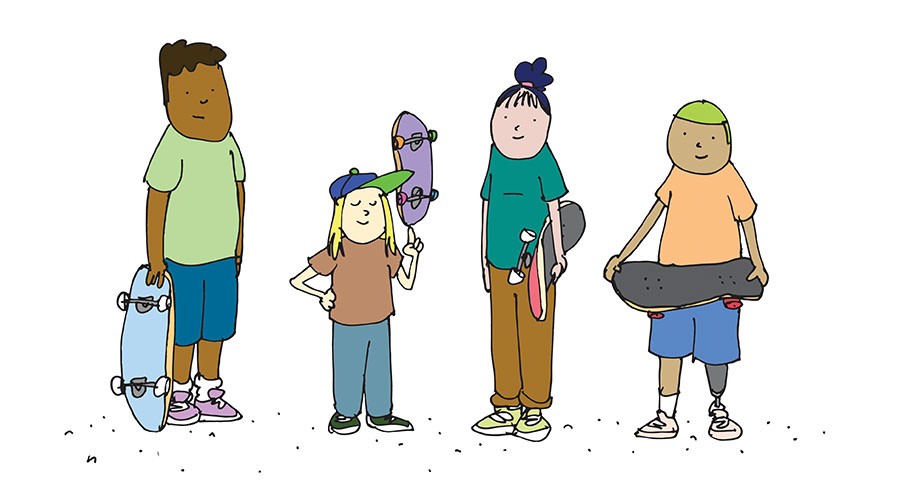
What Size Skateboard Deck Should I Get?
Wondering whether to choose a mini, or full-size skateboard deck? We've listed a few key factors below that you'll need to take into consideration before you make your decision.
Width and Length
When choosing a skateboard, you need to identify the size that feels right for you. In general, street skateboards are similar in length, but their width varies considerably. Narrow decks suit younger riders, medium width works well for technical tricks and wider boards are more suitable for transition or pool skating and cruising. And it follows that a smaller person would skate a smaller board.
Your Shoe Size
While choosing the right skateboard size will ultimately come down to personal preference and riding style, opting for a deck that's too wide or too narrow is going to have an impact on your ability to execute technical tricks. A good place to start is by picking a deck width proportional to your shoe size. Here are a couple of recommendations to help point you in the right direction:
- If you wear a men's US size 6.5 to 9, or a women's US size 8 to 10.5, a deck width of 7.5" to 8.0" is ideal
- If you wear a men's US size 9.5 or larger, or a women's US size 11 or larger, between 8.0" and 9.0" is the way to go
Your Height
Another factor to help determine the right size is how tall you are:
- Kids between 3'5" and 4'4" will be better off with a mini board (6.75" - 7.25") or a deck that has a shorter wheelbase (7.375"). Shop our shorter Twig decks.
- If your height is between 4'5" and 5'2", a mid-size deck is recommended (7.5" to 8").
- Anyone taller than 5'3" can opt for a full-size board (8" to 9").
Your Weight
Much like your height, you may also want to consider your weight when picking the right deck size. Heavier skaters tend to need a wider deck to distribute their weight more evenly.

Wheelbase
The wheelbase, or distance between the mounting holes for trucks, determines how far your trucks and wheels sit apart, which can also affect the way a skateboard rides. Wheelbase mostly comes down to preference, but in general, as the board gets larger, so does the wheelbase, which increases turn radius and comfort and reduces manoeuvrability and pop.
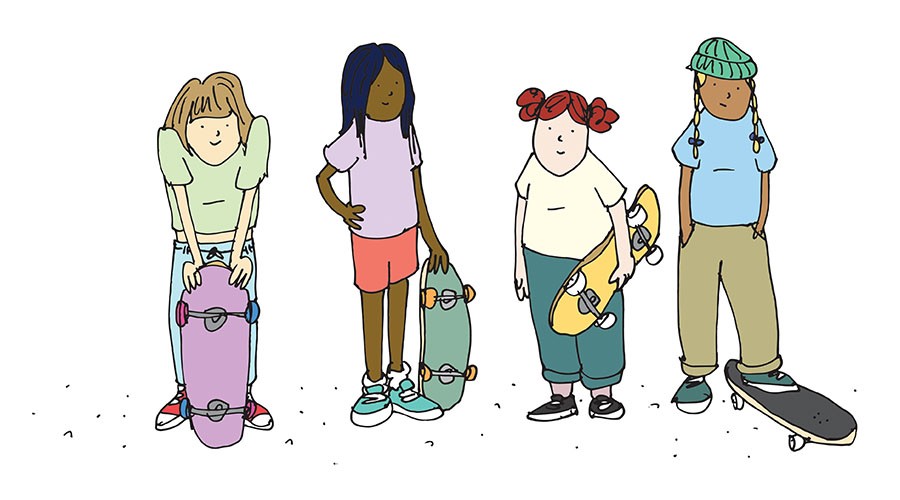
How do I Choose a Skateboard for a Girl?
Since the main factors when choosing a skateboard are height, weight, age and shoe size, there are no female-specific factors to consider when choosing a deck for girls and women.
What's important to consider is the deck width and deck length, and whether these are suited to your physical attributes and skateboarding needs. Larger and wider decks are typically more stable, while smaller and narrower boards are better for flip tricks and technical skateboarding. Read more about this in our article "Skateboards Sizes".
SHOP SKATEBOARD DECKS